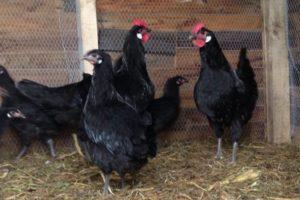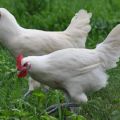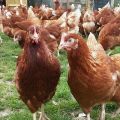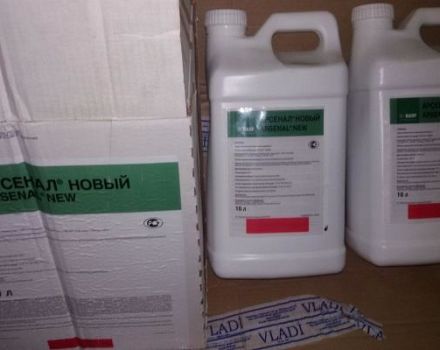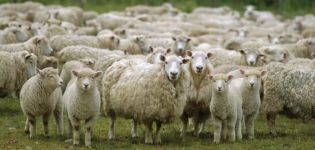Characteristics and description of the breed of mini meat chickens, maintenance rules
Breeding mini meat chickens is a profitable and fairly simple activity. Having a small size, high productivity and unpretentiousness to keeping conditions, representatives of this breed can be grown both by medium and large farmers, and by simple owners of private farmsteads. Another advantage of this poultry is its calm and docile nature.
Breeding history
Mini meat chickens were bred in the SGC Zagorsk experimental breeding farm in the 80s of the last century. In this case, individuals of such key foreign breeds as Leghorn, Rhode Island Red, Plymouth Rock, Cornish were used as parents.
Thanks to the breeding work done, mini meat chickens of 3 main colors were bred:
- fawn;
- snow white;
- brown-black (red-black).
General description and characteristics
Compared to other breeds, mini meat chickens have a specific appearance, character, have a number of advantages and disadvantages.
Appearance
Mini meat chickens are characterized by a compact body, small limbs with the size of the middle part (metatarsus), on average, 30-35% smaller than that of other breeds, dense and even plumage. In addition to short limbs, a distinctive feature of such chickens is a leaf-shaped, small-sized ridge. Such chickens reach sexual maturity at the age of 6 months.
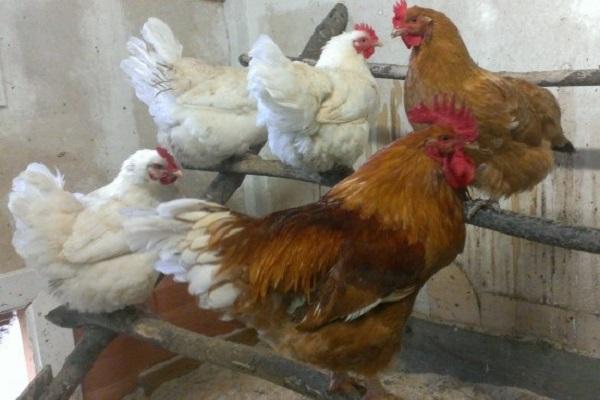
Character or temperament
The bird of this breed is characterized by a calm character - released from the poultry house into an unseeded vegetable garden, they do not arrange total "excavations" in the beds and paths; do not emit a loud clucking, quite rarely from impatience they peck at the hands of the owner who brought the food. Roosters of mini meat breed do not have a lively disposition and rarely attack humans.
Productivity
Chickens of this breed have the following productivity characteristics:
- The maximum weight, when grown for meat products, - the weight of chickens can reach 2.7 kilograms, for cockerels - 3.0-3.1 kilograms.
- Egg production - with proper feeding and care, one chicken of this breed can produce up to 170-200 eggs per year.
- Weight of one egg - the weight of one egg, depending on the conditions of keeping and feeding, ranges from 55-57 to 60-66 grams.
- Chick hatchability - when hatching chickens by the incubator method, this indicator, on average, is 85%.
- Survival of chicks - with proper care and feeding in the first days of life, about 94-99% of chicks obtained by the incubator method survive.
- The survival rate of adults - for various varieties of this breed, this figure is more than 90%.

Advantages and disadvantages
The main advantages of mini meat chickens are:
- convenience of keeping compact chickens in small cages and enclosures;
- rapid growth of young stock in the first 6 months;
- large sizes of egg products;
- calm character.
The disadvantages of such chickens include:
- Susceptibility to diseases when walking in damp weather - due to short limbs, chickens released into an open walking yard touch damp ground with their stomach, which further leads to severe contamination of feathers and the appearance of various diseases;
- Frequent diseases of the limbs with unbalanced feeding or improper care and maintenance.
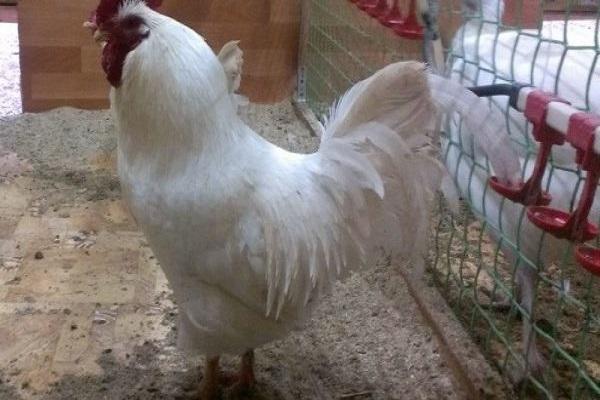
Variety of chickens
The main varieties of this breed of chickens are such as P-11, B-33, B-66, B-76, B-77.
P-11
P-11 is a mini meat variety of the famous Rhode Islands. Differs in rapid growth, disease resistance, calm character. Regarding the universal type, dwarf Rhode Islands have both high egg production (capable of producing up to 200 eggs per year) and excellent meat taste.
B-33
B-33 (dwarf Leghorns) are egg mini meat chickens with a snow-white plumage, tightly fitting to the wedge-shaped body of the bird, shorter legs than the previous variety, and a small rounded head. The comb of cockerels in this species is located strictly vertical, while in laying hens it is slightly lowered to one side.
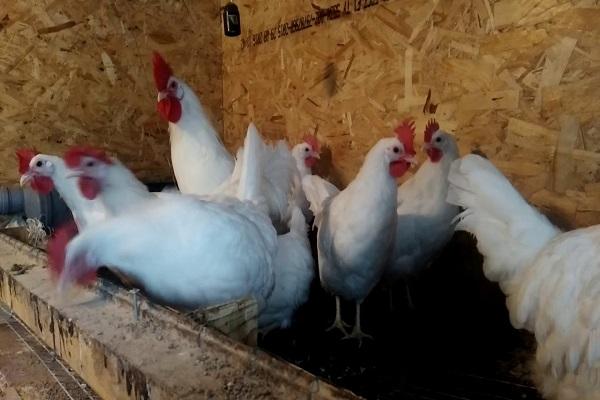
B66
An adult of this variety has a pure white plumage, has a strong skeleton, a wide, well-formed breast, short, but at the same time sufficiently strong and correctly set limbs.
Mini-meat chickens of this variety belong to the universal type of use: the egg production of an adult chicken per year, on average, is 180-200 eggs; the weight of the bird, when raised for meat, at the age of six months is 3.3 kilograms for males and 2.7 kilograms for chickens.
B76 and B77
Individuals of these varieties have the same characteristics as those of B66. They differ from the latter only in the color of the plumage - in chickens of the B76 variety, the white plumage has fawn shades, while in the B77 species, the feathers have a pale brown color, with a characteristic golden tint.
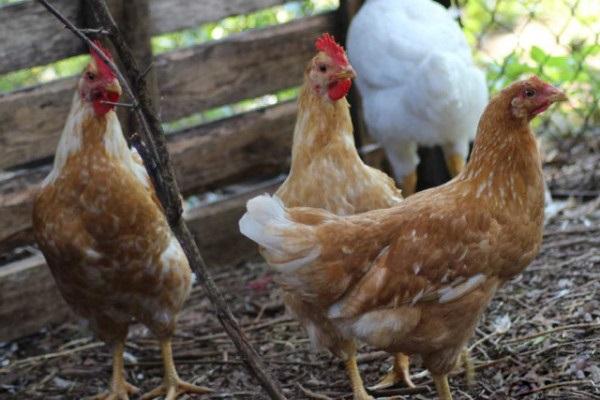
Bird keeping
High egg production and excellent taste of this breed directly depend on the correct keeping of the bird.
Walking
For walking dwarf chickens, a small walking yard is used, adjacent to the chicken coop and surrounded on 3 sides by a 150 cm fence made of a chain-link mesh with a cell of 50 × 50 millimeters. The size of such a yard is determined depending on the chicken population - 1 square meter is enough for 1 mini chicken.
So that the courtyard is not dirty, it is covered with sawdust; in the place where the container for feed and water will be located, make a small pitched roof from a piece of slate.
In early spring, you can release such chickens for a walk in the garden - they have a calm character, they will not make a large number of holes and will not create discomfort with loud clucking.
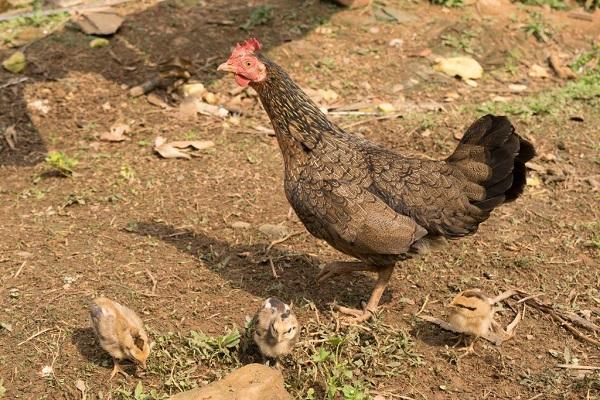
Chicken coop
For mini chickens, as a rule, a small frame poultry house is built with 3-4 perches, each 40 centimeters high, with a walking yard located on the south side, connected to the main room by a square manhole. The height of the chicken coop should be at least 160 centimeters - this is necessary so that you can go into it without bending and collect eggs from the perches. When raising chickens for meat, they are kept in cages.
Important.Since mini chickens are very sensitive to cold weather, the hen house, intended for their year-round keeping, must be insulated, all the cracks through which cold air can enter the house must be closed.
Care
Caring for this breed of chickens consists of such activities as:
- Timely walking.
- Keeping the inside of the house clean, changing the bedding frequently on perches and in cages.
- Airing and disinfection of the chicken coop every 6 months.
- Control of the presence of a sufficient amount of clean water in the drinkers.
Also, when growing such a breed of chickens, you must carefully monitor the condition of the limbs of the bird.
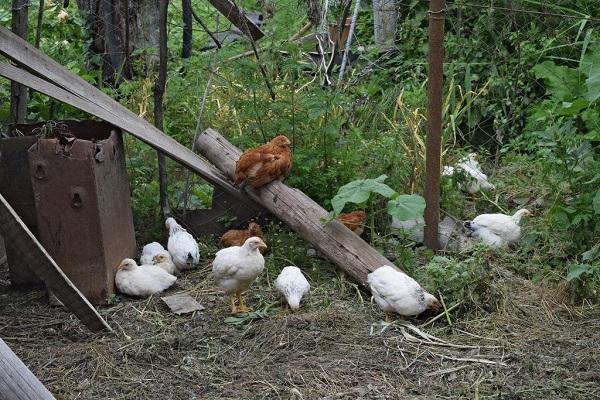
Nutrition
Such a bird is fed with conventional chicken feed for broilers and egg breeds. In summer, green grass mass, mineral additives (chalk, limestone, finely ground meat and bone meal) are additionally added to the compound feed. Average feed consumption per bird per day is only 120-130 grams.
Breeding
This breed of chickens is propagated in two ways:
- Natural incubation of eggs by a hen.
- Artificial production of chickens in homemade or special incubators.
The first method, although not costly, is risky, since not every chicken will hatch eggs. The incubator method, while maintaining the required temperature, allows you to get a large number of healthy chickens in a relatively short period of time.

What diseases are prone to
This breed of chickens is susceptible to infection with infectious diseases such as:
- pasteurellosis;
- salmonellosis;
- pullorosis.
From viral diseases, mini meat chickens are affected by neurolymphatic disease, nephrosonephritis, chicken pox, and bird flu.

In order to avoid contamination of the bird with the diseases described above, it is necessary to maintain cleanliness in the chicken coop, change the bedding, water and feed in the drinkers, prevent contamination of feed with earth, and exclude the entry of wild animals into the coop.
Important. If you find signs of dangerous viral diseases in birds, you should immediately contact the local veterinary service for recommendations on the localization of the disease and the further fate of non-infected birds..

